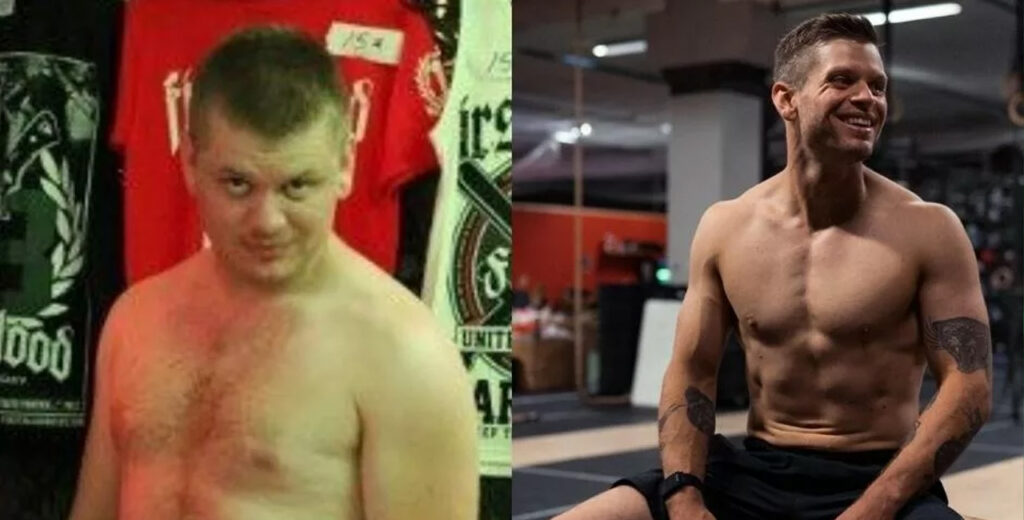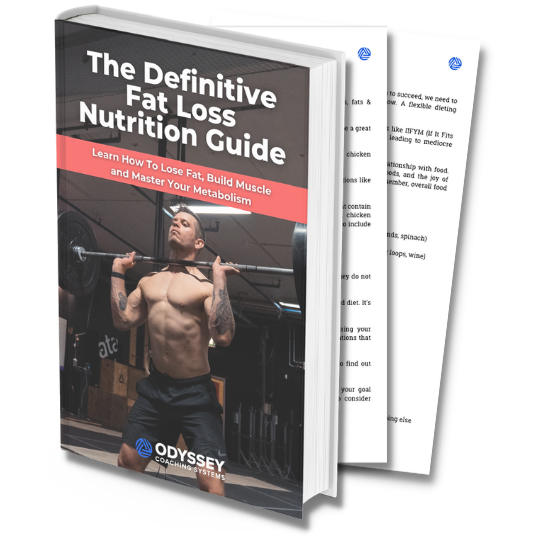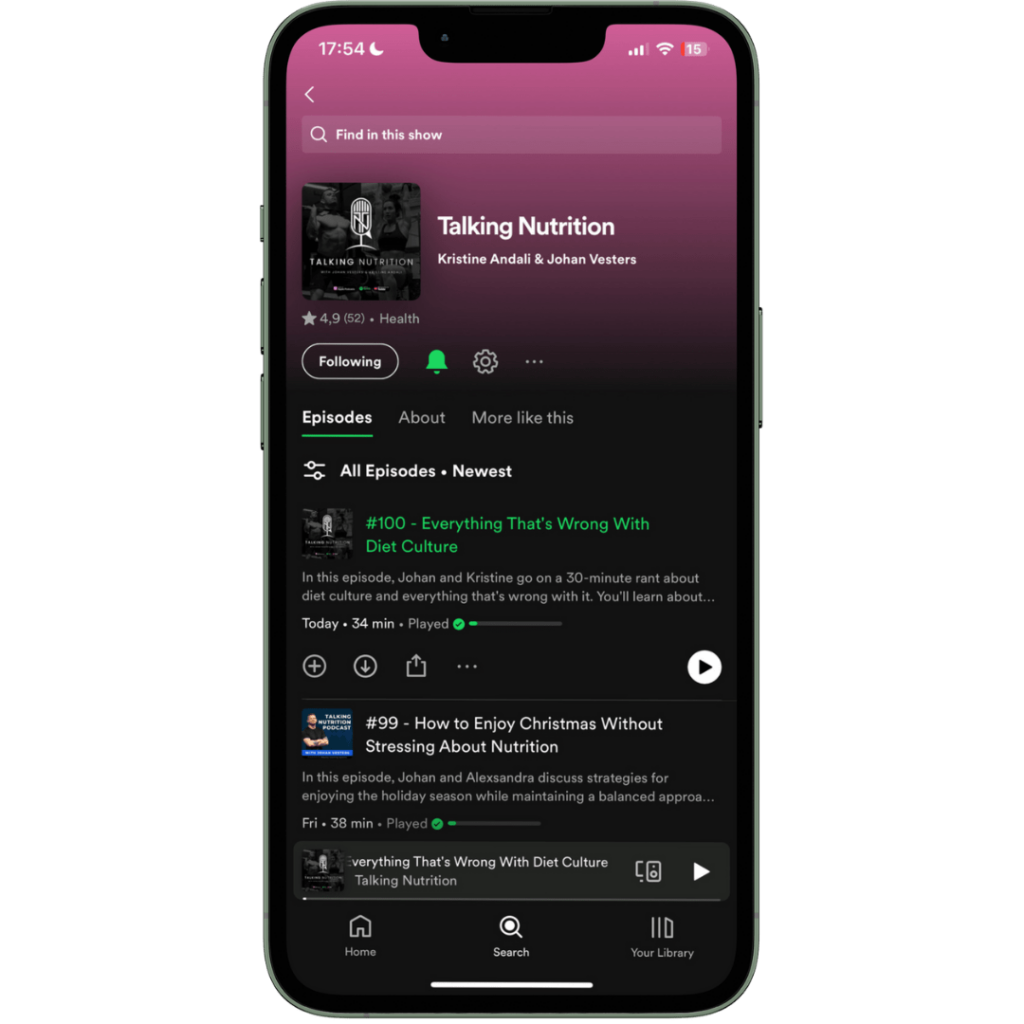You feel like you’ve tried every diet out there, but the results just won’t show. You want to finally get that weight off, and be able to keep it off. In this article, we’ll discuss 3 specific toggles for weight loss that will help you on your fitness journey. You’ll learn what to do, how to do so sustainably, and most importantly the why behind it. You’ll find out what might have held you back during previous attempts, and how to do it differently this time.
You deserve answers to your questions, you deserve to reach your goals and maintain your results. So let’s not keep you waiting any longer, and let’s jump right into it.
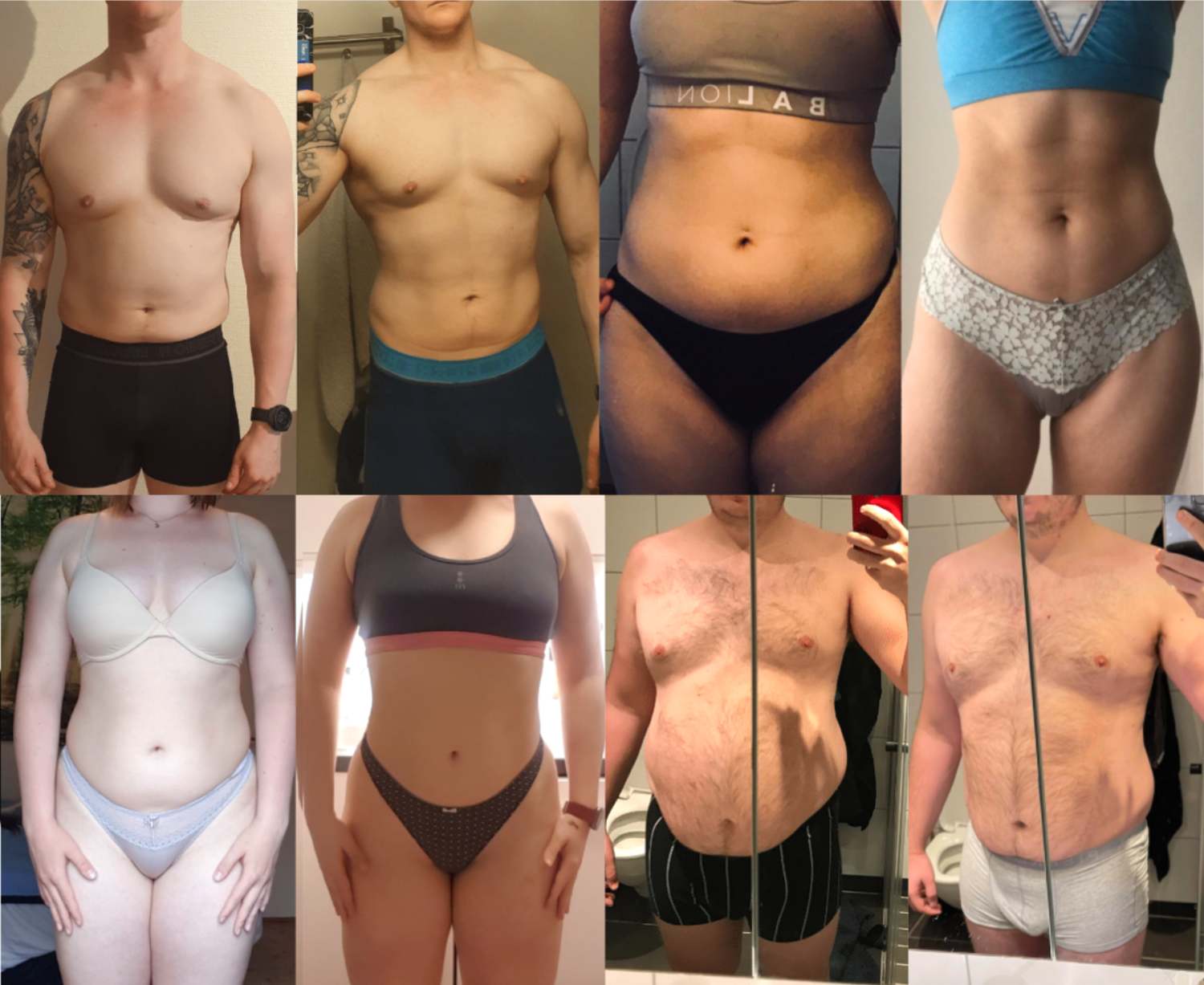
What Drives Weight Loss
- Calorie deficit: Calories in < calories out (Weight loss. Also called ‘dieting’ or ‘cutting’).
- Maintenance: Calories in ≈ calories out (Weight maintenance. Range of ± 300 kcal).
- Calorie surplus: Calories in > calories out (Weight gain. Also called ‘bulking’).
Calories In
- Protein ≈ 4 kcal/g
- Carbohydrate ≈ 4 kcal/g
- Fat ≈ 9 kcal/g
- Alcohol ≈ 7 kcal/g
Calories Out
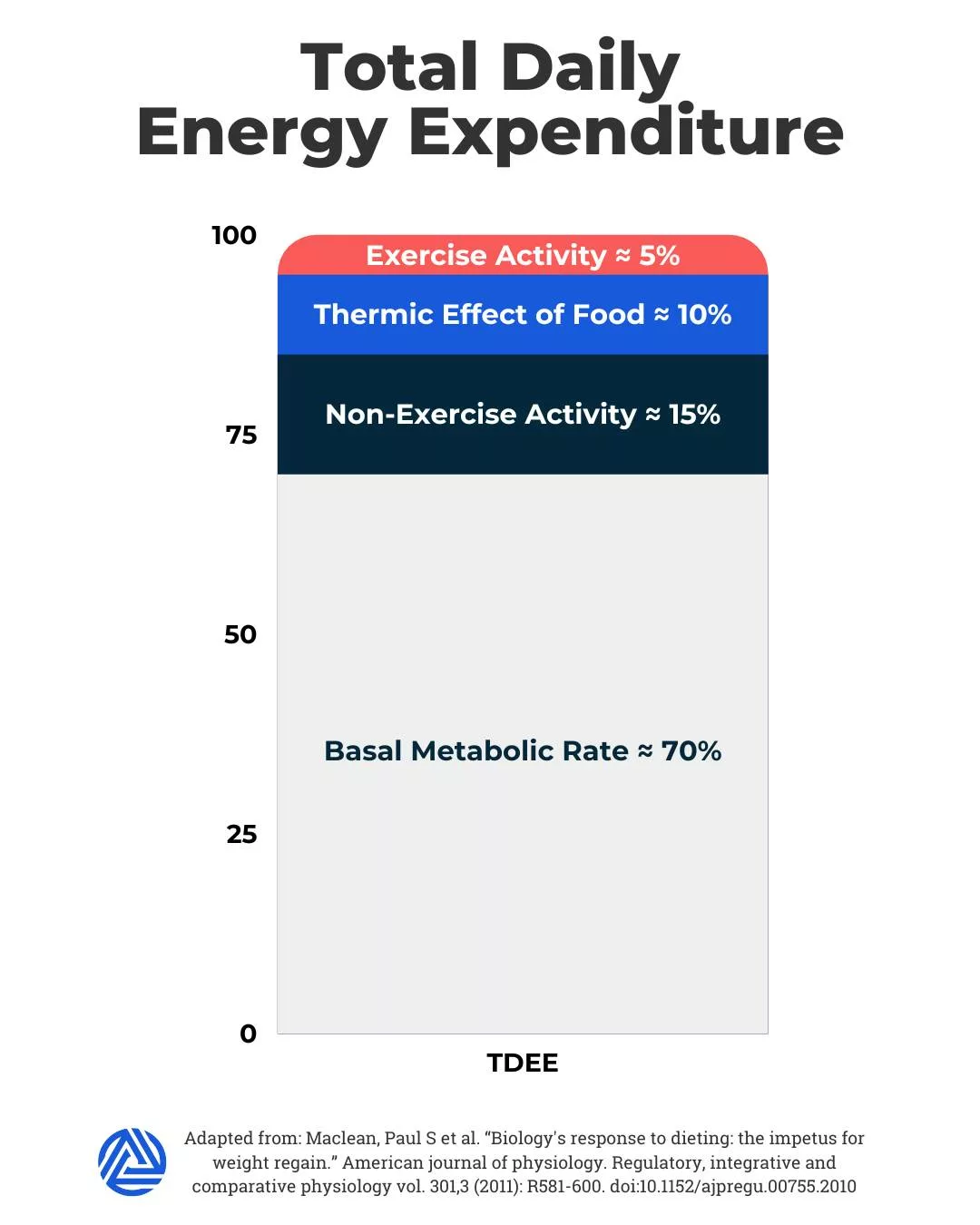
Metabolism
"A calorie deficit is perceived by the body as a period of famine (a scarcity of food). It does not know about the fridge in the next room, or the supermarket around the corner. It simply perceives “There’s a lack of food” and will compensate accordingly."
More than often, people blame their metabolism for their inability to lose or gain weight. Thing is, your metabolism isn’t static, it isn’t just ‘fast’ or ‘slow’. It’s adaptive, and a direct result of your lifestyle and environment. It regulates your energy output to make sure you make it through extended periods of famine (a scarcity of food), help you deal with all types of stress, or ‘threats’ (fight/flight), enjoy times of feast, and ensure the continuation of our species.
Read more about what happens to your metabolism as you age.
What combats weight loss
By now you know that simply focusing on eating fewer calories than the amount your sports watch tells you you’re burning, isn’t all there is to weight loss. EAT, NEAT, TEF, BMR, your body mass and even hormones, all matter. They’re also interconnected with the Calories In side of energy balance. When you reduce Calories In, your body eventually adapts, this is called metabolic adaptation.
A decrease in calories from your diet can negatively affect performance (EAT) [2]. As there is less fuel available, and muscle glycogen stores are often at least somewhat depleted, performance will likely suffer.
Consciously or not, you’ll be less likely to move around as much throughout the day (NEAT) [3]. You might see a decrease in your daily step count and even make fewer hand gestures or blink and twitch less.
Also TEF decreases, simply because the digestive system requires less energy to break down and absorb the smaller amount of food that’s coming in.
As you lose weight, and lose metabolically active tissue, even your BMR decreases [2]. This even connects back to EAT and NEAT as movement now also requires less energy.
Hormones affect weight loss, but aren’t separate from calories. A decrease in Thyroid output has a negative effect on your BMR [4]. Leptin and Ghrelin, your hunger and satiety hormones can impact calories in and influence weight regain [5]. Even your sex hormones have an influence on performance and body composition [6].
OK, enough with the sciency stuff. You want to take action. So let’s get to it.
3 Toggles for weight loss
Many fad diets focus on tons of cardio, paired with a drastic decrease in calories, while cutting out all your favorite foods. This is a recipe for weight regain, which is not something you’re after, right? These toggles will serve you well, when used conservatively and strategically. Don’t just go all-in and pull all toggles at once. Instead, use the minimum effective dose. Take your time, adjust only when you really need to, and be prepared to take it slow and steady this time.
1. Decreasing food intake (Calories In ↓)
You’ll likely have to cut out a good chunk of your carbohydrate intake, but not because they’re bad. Carbohydrate is the body’s preferred fuel source, and even the brain requires quite a bit of glucose to function properly. But unfortunately, you do need to lower your carbohydrate intake for the time being.
Why?
First of all, you don’t want to lower protein. If anything you’d want to up your protein intake during a diet. This will help you maintain muscle mass, but will also keep you full [7,12]. Protein is the most satiating macronutrient, which makes it almost like a secret weapon to help you take on that calorie deficit headfirst. A standard protein recommendation for adults would be 0.8g/lbs of lean or goal body mass [8], though going as high as 1.4g/lbs could even be more beneficial [9].
Fats, depending on your current intake, will likely have to drop to a minimum. Because remember, fats are 9 calories per gram. Compared to carb and protein sources, fats are very calorie dense relative to the actual food volume. Knowing that hunger will be present during a calorie deficit anyway – which is normal, it’s a sign that it’s working – you’re going to want to try and keep your food volume up, for which fats aren’t very useful. Now you can’t just cut them all out either, because you do require a minimum amount for hormonal health. Just about 0.3/lbs seems to be sufficient [10].
Incorporating alcohol, although it does have a high thermic effect, is probably not going to be your best bet. At 7 calories per gram, plus it being liquid, plus knowing that it might influence food choices, you might want to prioritize actual food instead. Know that you can still puzzle alcohol into your daily and weekly calories if you really want to, although your caloric ‘budget’ is obviously going to be much smaller during a diet.
So, protein is important for muscle retention and satiety and fats for hormones, meaning that what’s left is carbohydrate (and I suppose alcohol, but let’s save that for maintenance). This is why the biggest difference you’ll see during a diet is a drop in carbohydrate intake. Again, not because carbs are bad, but simply because that’s what’s left to take away from.
2. Increasing exercise activity (Calories Out ↑)
You already know that EAT only accounts for 5% of your TDEE, which kinda makes it a minor toggle. Yes, you can increase exercise if this is relatively low, but more isn’t always better. If you already train 3-5 times a week, you don’t need to put the body under even more stress. Exercising – resistance training in particular – to build and maintain muscle mass can be a great way to increase Calories Out in the long term (more muscle mass = BMR ↑) [11]. But don’t rely on it thinking you’ll burn a whole lot during the actual session, even if you’re drenched in sweat. Just try to have a good session, and most importantly, enjoy!
Now, for your biggest toggle for weight loss..
3. Increasing non-exercise activity (Calories Out ↑)
NEAT is where you’ll be able to make the biggest difference. Remember that it accounts for 15% of your TDEE. Again, EAT is most definitely something you’d want to keep doing. But not for the sake of burning a ton of calories. Instead, aim to be more active throughout the day. Walk to work or to the store, take the stairs, get some gardening work done, play outside, etc.
NEAT and sleep are probably the most underrated aspects in healthy & fitness.
Increased Non-Exercise Activity (Thermogenesis) can help improve insulin sensitivity, blood pressure & HDL cholesterol levels. It can help you burn more calories throughout the day, while remaining in what is called a parasympathetic state (your rest/digest state). I often encourage my online fat loss clients to go for more walks and spend more time outside. Going for a walk and exposing yourself to light in the morning can support a healthy circadian rhythm. This can help you get more of the essential micronutrient Vitamin D and some fresh air, lower cortisol levels.
As a final reason to incorporate more steps. Walking can also help with digestion. A nice little habit to incorporate could be a quick 10 minute walk after breakfast, lunch or dinner. Too busy? Just take 5 minutes! Every bit of NEAT adds up.
Get active, get outside.
BONUS: Increasing thermic effect of food (Calories Out ↑)
Ok, so you got your 3 toggles for weight loss. One minor toggle: increasing exercise activity, and two major toggles: decreasing food intake & increasing non-exercise activity. But you deserve another little bonus tool in your belt, let’s address the thermic effect of food. Consuming a diet high in protein and fiber helps you increase the overall thermic effect of food, which accounts for about 10% of your TDEE [1,12]. There are limits to this toggle though, which is why I wanted to only include it as a bonus toggle.
A high protein diet does seem to be most beneficial when it comes to body composition [7]. But you can’t keep adding protein forever, remember your caloric budget is still relatively limited when you’re in a deficit. Plus it would only take away from your carbs and/or fats, which in turn might not be great.
With fiber, it’s all about finding the sweet spot. Fiber is actually a form of carbohydrate, though because of its structure you can’t properly digest it. However it’s still an important part of a healthy diet. Sources like fruits and vegetables come with tons of micronutrients, water and fiber. Fiber helps your GI tract to keep things moving, plus your microbiome love to feed off it. Consuming too little fiber can cause digestive issues, but so does consuming too much fiber. Typically, for most people, about 20-30g a day seems to be a sufficient amount (based on 14g per 1000kcal [13]).
During a diet, you might want to up your fruit, veggie and protein intake so you feel nice and full. It’s all about trying out different foods that fit your caloric budget, and finding out which serve you best during a diet. Our clients track their food in Cronometer. This gives them a good overview of their macro and micronutrient intake.
Although you can influence satiety by making the right dietary choices, hunger is to be expected. This is a signal that it’s working. It’s your body telling you “Hey! Why are you giving me less food, we need more food!”.
Applying the 3 toggles for weight loss
Now, before you go “I’m going to live off chicken salads, exercise twice a day and get my daily step count up to over 10.000”, let’s slow down for a sec. Let’s go in with a plan. Again, let’s use the minimum effective dose, rather than going all-in. Using one toggle at a time should do the trick.
Where you should begin, depends on where you’re currently at in your journey. What does exercise look like? How active are you outside of the gym? Do you currently eat enough? What about protein and veggies? What have you tried in the past, and how much time have you spent dieting?
If this has you feeling like “uhhh”, go ahead and open up your Instagram right now. Before you continue reading, send a DM to @johanvesters_ocs and ask away! I will personally get back to you to help you decide your first steps.
Sample steps:
- After establishing maintenance, and spending some time around the upper limit of your maintenance range, you can cut your calories by 20%. This should be the only time you make such a big change. After this initial drop, it’s all about getting away with as much food as possible. Be conservative, and only lower by about 100-200 kcal.
- If you’re currently not exercising, this is your time to start exploring the things you enjoy (Check out the book ‘Fit’ by Paul Olima). Resistance training is a very effective and fun form of exercise, as you can constantly get better and challenge yourself. Building muscle will also help you maintain a relatively higher BMR [11] and is also important for overall health and longevity [14]. However, if you’re not a fan of weights, there are tons of options out there. Everyone’s different, and what you enjoy might be completely different from what your friend does. Whether you want to try CrossFit, yoga, weight lifting or something else, introducing one or two full-body training sessions a week could be a great start!
- If you already exercise, check in with yourself and assess how things are currently looking. Could you get more out of your sessions? Are you consistently showing up? Maybe you’d like to add one session a week to your schedule? Also here, don’t get too excited. 3-5 sessions a week seems to be more than enough for most people and their busy schedules. Recovery is just as important as the actual training sessions you’re doing.
- Increase your daily step count by 2.000, it’s easier than you might think! Look for small opportunities throughout the day, and you’ll get there in no-time. Take the stairs, walk to the store, park further away from work, or simply go for a morning, afternoon or evening walk. Get outside!
Adjusting your toggles
Make sure to track your weight, but don’t go off single weekly weigh-ins. Instead, track your weekly average based on at least 3 weigh-ins a week. Check in with yourself every now and then to decide whether it’s time to pull another toggle or not.
If your weight does not change for a week, don’t freak out. Continue what you’re doing.
If your weight does not change for two weeks, don’t freak out.
Keep going.
Even if your weight does not change for as much as three weeks, don’t change anything.
Trust the process.
There will be times when your weight just won’t drop. This is completely normal, especially in the beginning. It’s not if, it’s when. This is exactly why you want to make sure you still have some toggles left. Just take your time, there’s literally no rush. If nothing’s changed for three weeks, go ahead and make your next adjustment.
Long term weight loss
The secret to long-term, sustainable, real results is to spend more time maintaining than you spend dieting. You’re not supposed to constantly cut your calories. The more you do so, the more your metabolism will do its best to adapt and reduce your energy output. This can have long term negative effects on things like your thyroid and sex hormones, and future attempts to lose weight due to metabolic adaptation.
A lot of my online weight loss clients are not ready to start a diet yet when they sign up. Months, sometimes years of chronic dieting has had them spin their wheels, not knowing what to do. You might even feel similar. You’re already so focused on eating ‘clean’, you try to avoid sugar, you eat small portions.. Your energy levels aren’t in a great place, workouts are always kind of ‘meh’, you struggle with cravings, have a tendency to binge, and even just looking at carbohydrates leads to weight gain.
The solution is maintenance.
It’s the place to be both before and especially after a weight loss phase. Most diets, meal plans or 4-week challenges will leave you without an exit plan. You simply go back to ‘normal’, and that’s where it often goes wrong. I could rattle on about how most diets fail, but that’s not what’s important here. What’s important is that we find you a sustainable solution.
You want to finally be able to just feel good, have plenty of energy, exercise, run around with your friends or kids and live a healthy, strong and happy life. Without those cravings, without having to worry about which foods you need to cut out, and without the scale deciding your mood for the day.
So, use the 3 toggles for weight loss to your advantage, but only for a relatively short period of time (a couple of months, max). Then once you’ve been going for a little while, and it’s time to take a break, go back to maintenance. Send your body the signal of “Hey, there’s plenty of food around. You don’t have to worry about burning fewer calories”. After the diet, gradually bring your food intake back up. Keeping your NEAT up can help you maintain your results [15].
A calorie deficit should not be your destination, maintenance is the place to be.
So, let’s go!
You’ve already tried losing weight the unsustainable way, let’s now finally get you to your goal and aim to keep it off. Take your time, and aim for slow progress rather than crashing your way down to your goal weight. If you’re roughly losing anywhere between 0.5 and 1% of your average body weight a week, you’re golden.
Sustainability first.
Tell your friends and family about your goals and explain to them why you’re doing what you’re doing. Get yourself someone to keep you accountable, so they can call you out on your shit when times get harder. Let them know how important this is for you, and they will be there for you.
Now, go ahead and take your journey into your own hands. It’s time for you to take action.
It’s time for lasting change.
- Maclean, Paul S et al. “Biology\’s response to dieting: the impetus for weight regain.” American journal of physiology. Regulatory, integrative and comparative physiology vol. 301,3 (2011): R581-600. doi:10.1152/ajpregu.00755.2010
- Trexler, Eric T et al. “Metabolic adaptation to weight loss: implications for the athlete.” Journal of the International Society of Sports Nutrition vol. 11,1 7. 27 Feb. 2014, doi:10.1186/1550-2783-11-7
- Levine, J A et al. “Role of nonexercise activity thermogenesis in resistance to fat gain in humans.” Science (New York, N.Y.) vol. 283,5399 (1999): 212-4. doi:10.1126/science.283.5399.212
- Kim, Brian. “Thyroid hormone as a determinant of energy expenditure and the basal metabolic rate.” Thyroid : official journal of the American Thyroid Association vol. 18,2 (2008): 141-4. doi:10.1089/thy.2007.0266
- Strohacker, K et al. “Adaptations of leptin, ghrelin or insulin during weight loss as predictors of weight regain: a review of current literature.” International journal of obesity (2005) vol. 38,3 (2014): 388-96. doi:10.1038/ijo.2013.118
- De Maddalena, Chiara et al. “Impact of testosterone on body fat composition.” Journal of cellular physiology vol. 227,12 (2012): 3744-8. doi:10.1002/jcp.24096
- Antonio, Jose et al. “The effects of a high protein diet on indices of health and body composition–a crossover trial in resistance-trained men.” Journal of the International Society of Sports Nutrition vol. 13 3. 16 Jan. 2016, doi:10.1186/s12970-016-0114-2
- Lupton, Joanne R., et al. \”Dietary reference intakes for energy, carbohydrate, fiber, fat, fatty acids, cholesterol, protein, and amino acids.\” National Academy Press: Washington, DC, USA 5 (2002): 589-768.
- Helms, Eric R et al. “A systematic review of dietary protein during caloric restriction in resistance trained lean athletes: a case for higher intakes.” International journal of sport nutrition and exercise metabolism vol. 24,2 (2014): 127-38. doi:10.1123/ijsnem.2013-0054
- Helms, Eric R et al. “Evidence-based recommendations for natural bodybuilding contest preparation: nutrition and supplementation.” Journal of the International Society of Sports Nutrition vol. 11 20. 12 May. 2014, doi:10.1186/1550-2783-11-20
- Wang, Z et al. “Resting energy expenditure-fat-free mass relationship: new insights provided by body composition modeling.” American journal of physiology. Endocrinology and metabolism vol. 279,3 (2000): E539-45. doi:10.1152/ajpendo.2000.279.3.E539
- Westerterp, Klaas R. “Diet induced thermogenesis.” Nutrition & metabolism vol. 1,1 5. 18 Aug. 2004, doi:10.1186/1743-7075-1-5
- Kranz, Sibylle. “Meeting the dietary reference intakes for fiber: sociodemographic characteristics of preschoolers with high fiber intakes.” American journal of public health vol. 96,9 (2006): 1538-41. doi:10.2105/AJPH.2005.068700
- Saeidifard, Farzane et al. “The association of resistance training with mortality: A systematic review and meta-analysis.” European journal of preventive cardiology vol. 26,15 (2019): 1647-1665. doi:10.1177/2047487319850718
- Kruger, Judy et al. “Dietary and physical activity behaviors among adults successful at weight loss maintenance.” The international journal of behavioral nutrition and physical activity vol. 3 17. 19 Jul. 2006, doi:10.1186/1479-5868-3-17


